AsiaSat 9 Satellite Overview
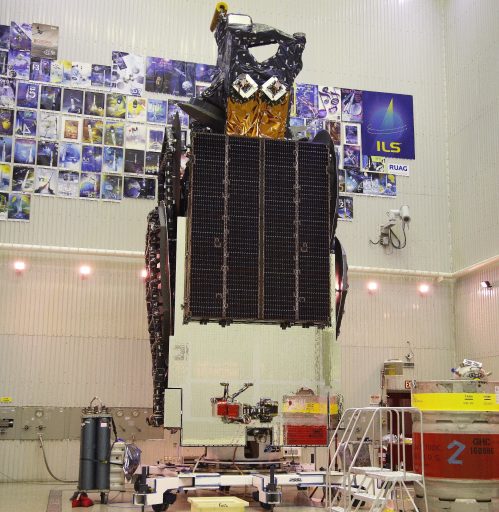
AsiaSat 9 is a commercial communications satellite operated by Asia Satellite Telecommunications Company (Asia Sat) to provide replacement and expansion services within the company’s fleet of satellites that cover all types of telecommunications services offered across the Asian continent and the broader Asian-Pacific Region including Australia.
Asia Sat, based in Hong Kong, has been in operation since 1988 and is controlled by Chinese CITIC Group and The Carlyle Group with Aberdeen Asset Management as second largest shareholder. Nine satellites were commissioned by the company starting with AsiaSat 1 in 1990. At the time of AsiaSat 9’s launch, the company had decommissioned its oldest three satellites and was operating six satellites stationed between 100.5 and 122° East.
Asia Sat ordered the AsiaSat 9 satellite in December 2013 from Space Systems Loral to host a multi-Band payload operating in C-, Ku- and Ka-Band to deliver a variety of communication services. To be stationed at 122.2 degrees East in Geostationary Orbit, AsiaSat 9 will replace the Boeing-built AsiaSat 4 that has been in operation since 2003 and is approaching the end of its expected 15-year service life in the first half of 2018. AsiaSat 9 provides additional capacity over AsiaSat 4’s 28 C- and 20 Ku-Band transponders to deliver additional communication beams and respond to growing demands in the Asia-Pacific Region.
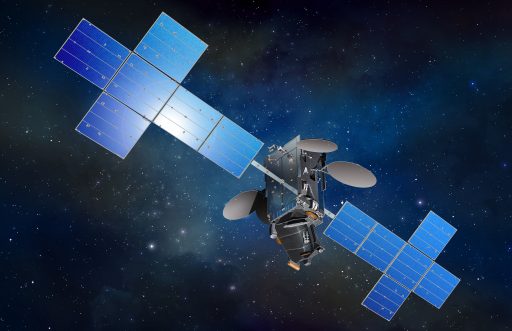
In addition to its communications payload, AsiaSat 9 was planned to host a commercial meteorology instrument for Las Vegas-based GeoMetWatch Corp., known as STORM (Sounding and Tracking Observatory for Regional Meteorology) – a high-resolution atmospheric sounder to deliver temperature and humidity profiles for weather forecasting and storm tracking. The payload was removed when the partnership between GMW and Utah State University fell apart due to funding issues.
AsiaSat 9 hosts a tri-band payload consisting of 28 C-Band transponders, 32 Ku-Band transponders and a Ka-Band package. The C-Band payload employs high-powered amplifiers to offer the highest transmit power available in the Asia Pacific Region; the AsiaSat 9 Ku-Band payload offers additional beams over the original AsiaSat 4 coverage and supports cross-strapping beam switching capability for flexible coverage, and AsiaSat 9 adds a high-power Ka-Band payload for regional coverage.
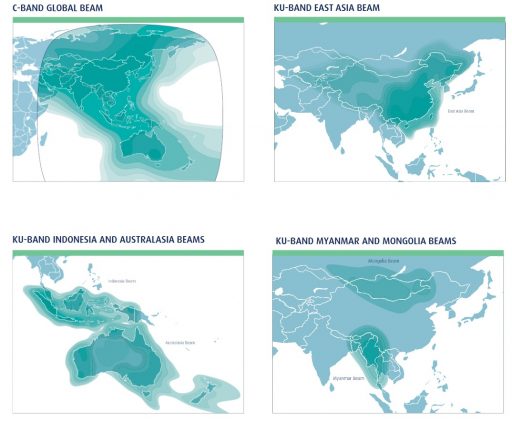
The satellite’s C-Band payload has a total bandwidth of 1,008 MHz and hosts 32 transponders with four acting as backups for 28 active units. The C-Band package employs 110-Watt Traveling Wave Tube Amplifiers and an advanced filter design allows for a 23% throughput increase over the AsiaSat 4 C-Band payload. C-Band coverage is delivered via a Global Beam that covers the Asia-Pacific Region and the Asian main land as far west as the Caspian Sea and the Arabian Peninsula.
AsiaSat 9 hosts 32 Ku-Band transponders with a total bandwidth of 1,728 MHz, employing 200W Traveling Wave Tube Amplifiers and a redundant low-noise amplifier architecture to ensure the satellite can deliver coverage to all five Ku-Band zones for the duration of its 15-year service life. The Ku-Band payload adds three new dedicated Ku-Band beams over the AsiaSat 4 payload and flexibility between the bands is accomplished via beam switching capabilities.
The AsiaSat 9 Ku-Band payload delivers an East Asia Beam covering the entire Chinese main land and Taiwan, a dedicated Myanmar Beam, an Indonesia Beam, an Australasia Beam covering Australia and New Zealand, and a Mongolia Beam. The Myanmar, Indonesia and Mongolia Beams are newly introduced by AsiaSat 9 and the East Asia and Australasia Beams are retained from AsiaSat 4 but feature enhanced power characteristics.
Services supported by AsiaSat 9 include Direct-to-Home Television distribution, video connectivity, private networks and broadband services.
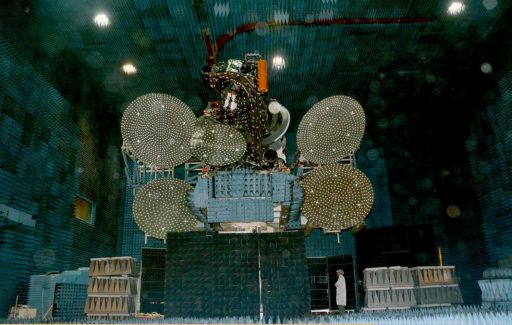
AsiaSat 9 weighs in at 6,140 Kilograms and uses the high-power version of the versatile SSL-1300 satellite platform provided by Space Systems/Loral as one of the most popular satellite buses currently in operation. SSL-1300 is a flexible satellite platform that can be flown in different configurations to accommodate different communication payloads with a total power of 5 to 18kW.
Using different configurations, LS-1300 satellites can weigh from 2,200 up to 6,700 Kilograms featuring payloads of 12 to 150 transponders.
Through optimizations, the number of transponders that can be accommodated can be increased even further. SSL-1300 was introduced in the late 1980s, but undergoes constant modifications going through a number of revisions over the years.
Two five-panel solar arrays deliver up over 15kW of power to a dedicated system that conditions the satellite’s power bus and controls the state of charge of the vehicle’s batteries. Three-axis stabilization and navigation is accomplished by state of the art navigation sensors and reaction wheels.
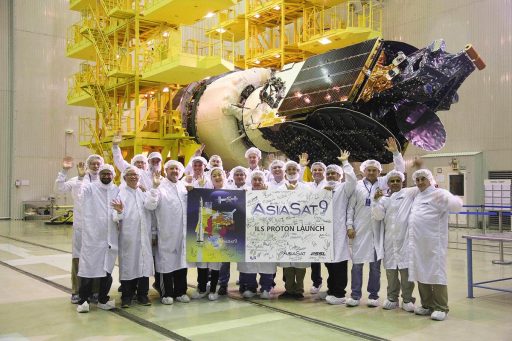
AsiaSat 9 employs a hybrid propulsion system with chemical thrusters in use for the climb into Geostationary Orbit and an electric propulsion for Stationkeeping in Geostationary Orbit, providing the option of an extended mission beyond what would be possible with liquid-fueled thrusters alone.
The satellite is equipped with a chemical propulsion system for orbit-raising and stationkeeping using ~450-490-Newton main engine and a series of attitude control thrusters. To enable a mission extension of up to five years, the satellite is equipped with an electric propulsion system that will be used for stationkeeping maneuvers in Geostationary Orbit, primarily for North-South Stationkeeping that requires around 45m/s of delta-v per year. To that end, the satellite is outfitted with four SPT-100 Stationary Plasma Thrusters, each weighing 3.5 Kilograms and generating 83 millinewtons of thrust by accelerating a stream of Xenon ions in an electric field, achieving an exceptional specific impulse of 1,600 seconds.
